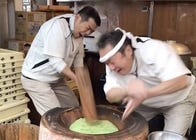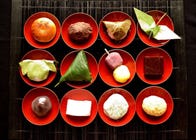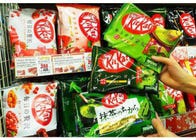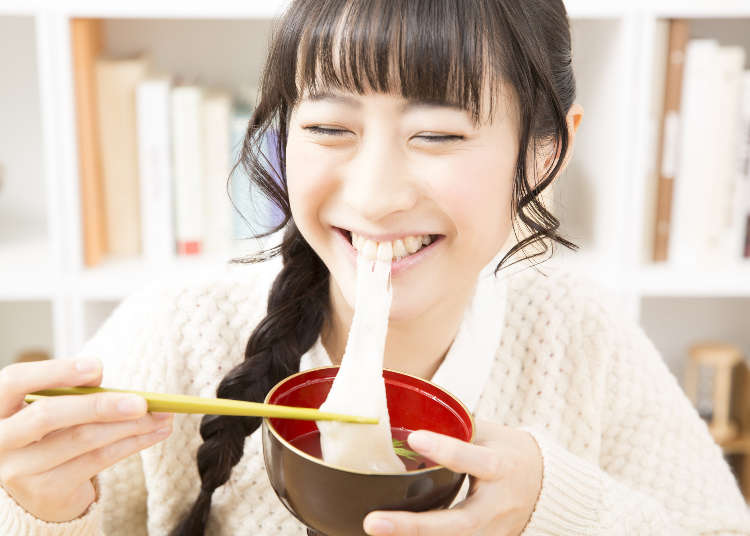
What is Mochi? Learn About Japan's New Year's Staple - Mochi!
- Written by: Naho Jishikyu
Mochi is a traditional Japanese food that many enjoy not only during the New Year, but at various annual events. It has even grown in popularity overseas in the United States alongside with sushi and ramen.
Mochi comes in a wide variety of shapes, with just as many different ways to prepare it, all differing by region. Today we will introduce the some useful information about mochi, as well as the history of this inseparable part of Japanese food culture.
Main image: PIXTA
What is Mochi?
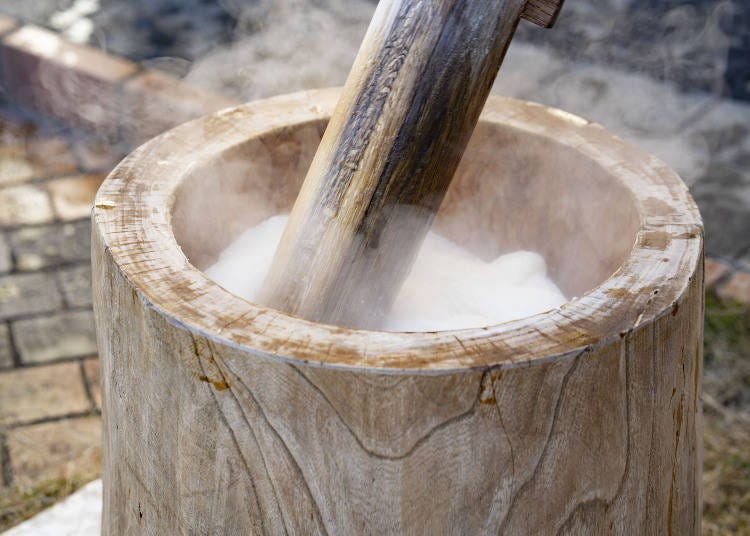
Mochi (or o-mochi, in polite Japanese) is a Japanese food made by processing mochigome, a type of glutinous rice. Typically, mochigome is steamed and pounded with a pestle and mortar to make mochi. However, it can also be made from grains, rice flour, and kudzu starch. It is usually round or flat.
One of the first types of mochi people adopted overseas was the Yukimi Daifuku, a brand of mochi ice cream.
Benefits of Mochi
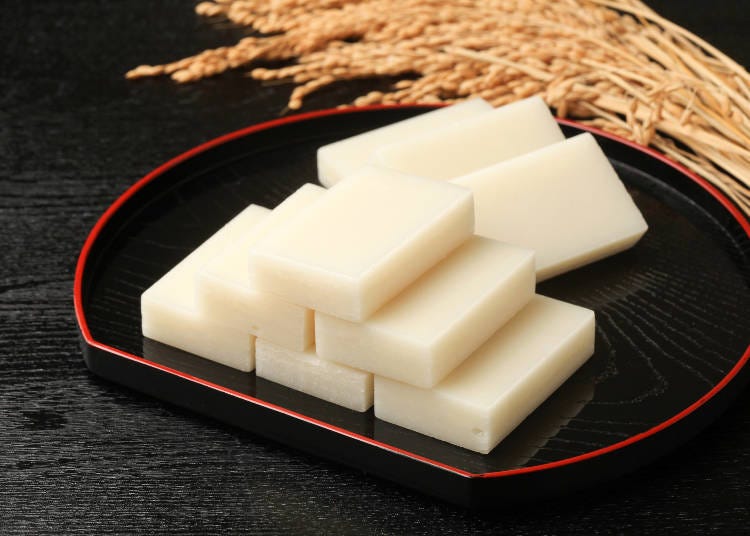
Mochi is rich in carbohydrates, which is the main source of energy our bodies expend during exercise. There are about 37g of carbohydrates per 100g of rice and 50g of carbohydrates per 100g of mochi.
Also, because it's compact, mochi is easy to supplement. Most people can eat two or three rice cakes even when they're not hungry enough for a full meal. One great thing about mochi is that there are so many ways you can eat it. Add it to soup, or mix it with radish or natto, and enjoy the nutritional benefit of other ingredients at the same time.
The History of Mochi
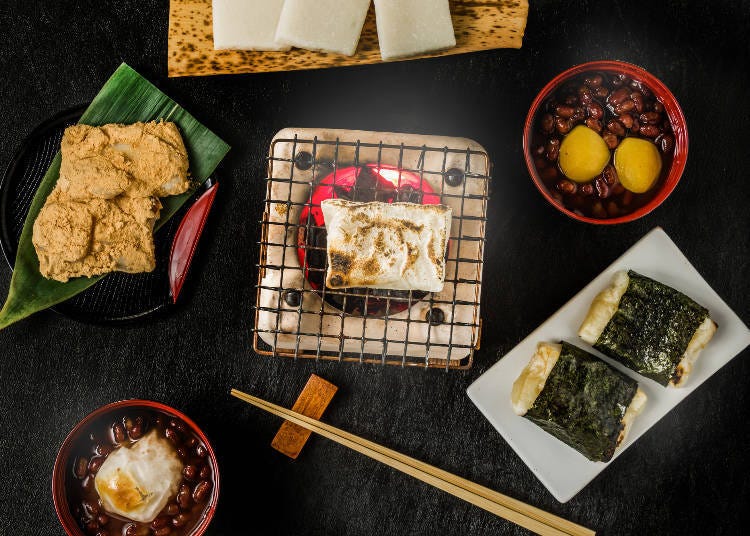
Mochi culture developed alongside that of rice cultivation. Japan developed a particular fondness for mochi culture because of its chewy texture. Literature from the Nara Period (710–794) depicts mochi as a popular confectionary amongst the aristocrats of that time.
During the Heian Period (794 to 1185), mochi made its way into celebratory meals on special occasions. People ate kagami mochi in January, kusa mochi in March, and kashiwa mochi in May.
Botamochi, yakimochi, and mochigashi became popular during the Kamakura Period, and more so during the Edo Period when people started including mochigashi as part of annual events.
When to Eat Mochi
Mochi has been a Japanese staple ingredient for a long time, often eaten during celebrations and seasonal festivals. Many people consider it an auspicious food for its color, shape, and seasoning.
・Kagami mochi (鏡餅)
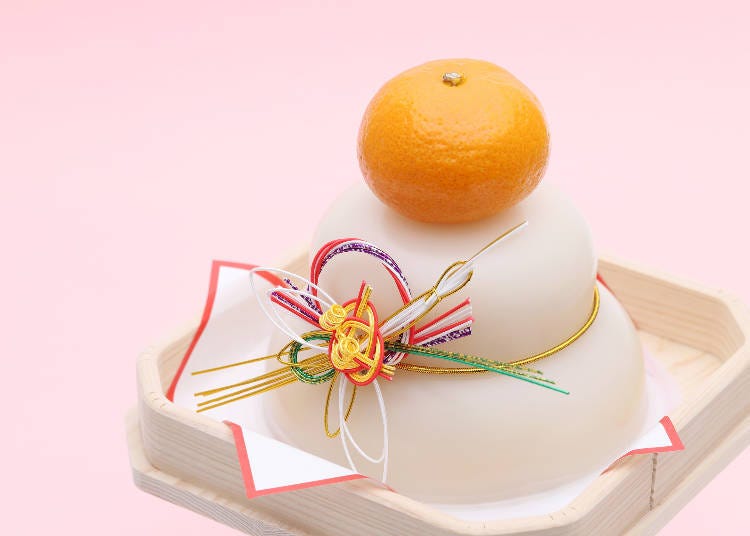
Flat, round rice cakes in the shape of a mirror, one of the three sacred treasures in Japanese mythology, piled up as an offering and topped them a small orange called a 'daidai'.
This auspicious fruit represents the wish for "a home that prospers for generations," as the word 'daidai' in Japanese also means 'generations'. In many regions, people leave it on display until the Kagami-biraki ceremony on January 11, and then eat it.
・Hishi mochi (ひし餅)
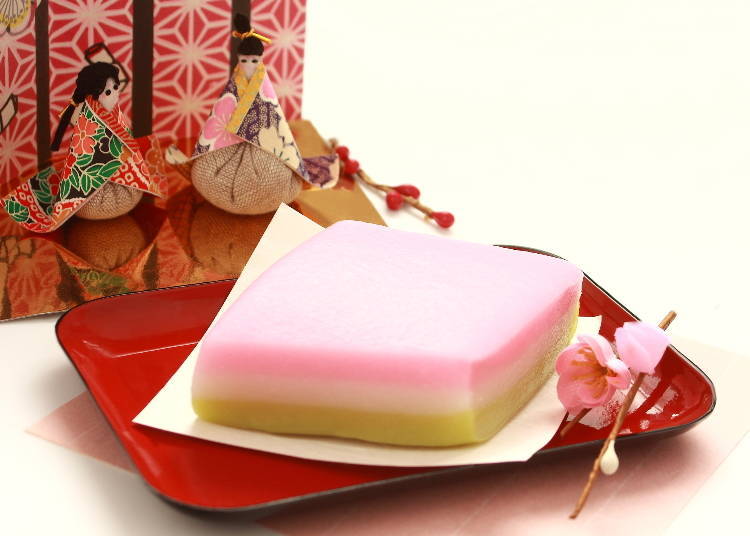
A diamond-shaped 'kusa mochi' made from yomogi (Japanese mugwort), which symbolizes strength and vitality, and is believed to ward off evil spirits.
Although there are some variations by region, it usually incorporates three colors - green, white, and pink - for Hinamatsuri (Girl's Day) on March 3rd. The colors represent health, purification, and protection against evil spirits, respectively.
・Botamochi (ぼたもち), Ohagi (おはぎ)
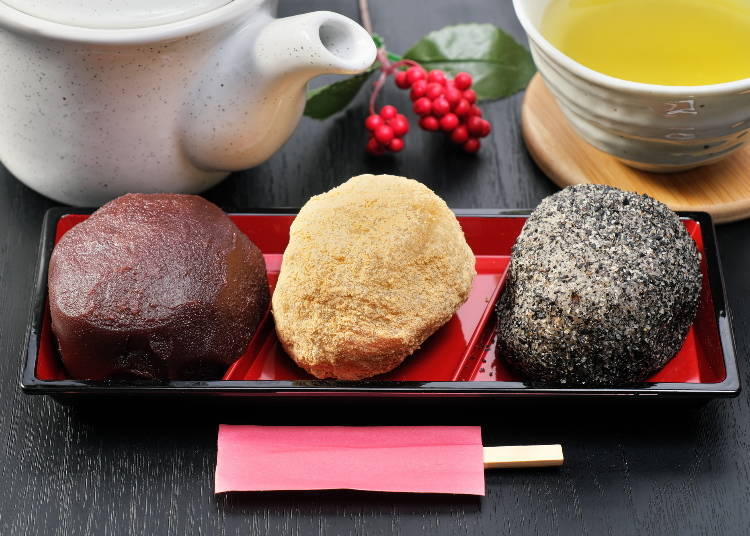
A wagashi made with cooked and mashed mochigome, an (bean paste), kinako (soybean flour), and sesame. These sweets began as customary offerings during the equinoctial weeks, called 'botamochi' in the spring and 'ohagi' in the fall. Depending on region, some call it 'botamochi' if it uses koshi-an (smooth bean paste), and 'ohagi' if it uses tsubu-an (bean paste containing whole beans).
・Sakura Mochi (桜餅)

This confectionery consists of a thinly-rolled mochi cake baked on an iron plate and filled with bean paste, wrapped in a cherry blossom leaf. It originated in Chomeiji Temple on the Sumida River, which is famous for its cherry blossoms, and is often eaten in spring. The Kansai region has its own version called Domyoji Sakuramochi, which are bale-shaped mochi cakes with red bean paste filling.
・Kashiwa Mochi (柏餅)
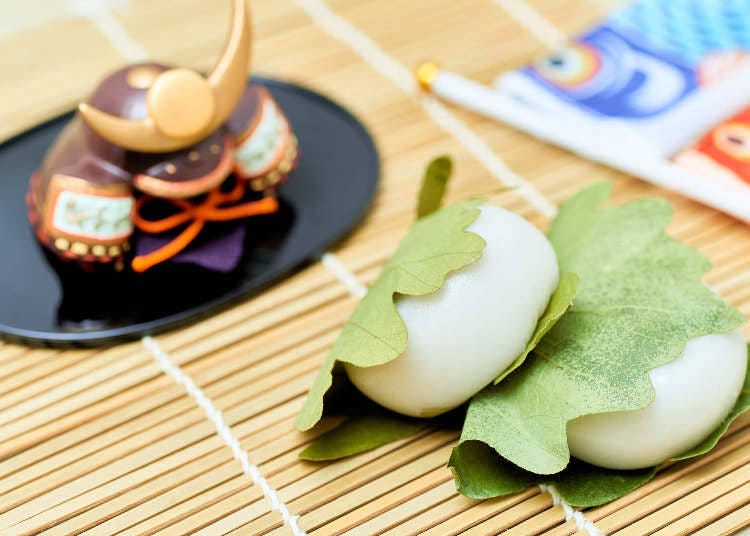
A mochi confectionary made by folding a flat, round mochi cake in half, filling it with bean paste, and wrapping it in a Kashiwa leaf.
These appeared in the Edo Period as an offering during Boy's Day (Children's Day) on May 5th to pray for the healthy growth of their sons. Kashiwa leaves, which normally don't drop until new shoots have grown, symbolize prosperous descendants.
・Tsukimi Dango (月見団子)
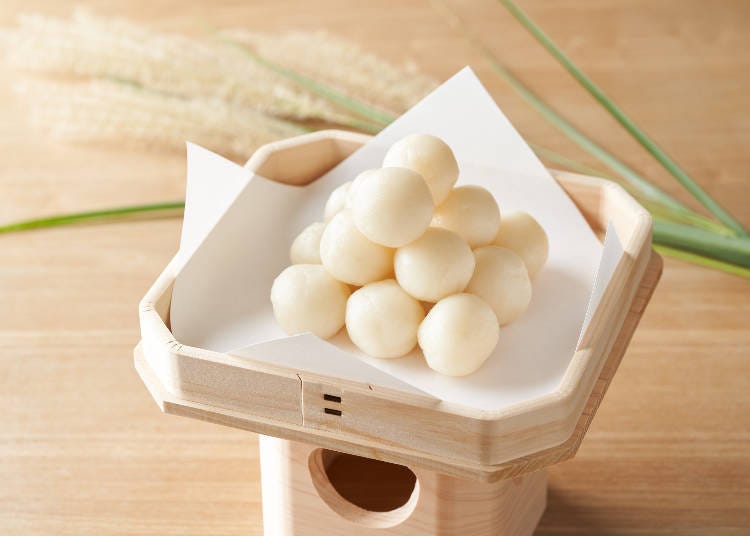
For this dish, people in the Kanto Region tend to use round mochi, while many people in the Kansai Region use dumplings wrapped in taro-shaped bean paste. This custom was introduced from China during the Heian Period as a mid-autumn harvest moon offering thanking the gods for an abundant autumn harvest.
How Much Mochi Do Japanese People Eat? Is Mochi Popular In Japan?

According to statistics from the Ministry of Internal Affairs and Communications, the annual consumption of mochi in Japan is about 2,300g per household (of two or more people) on average.
As the average piece of mochi on the market weighs about 54g, that means one family eats an average of 43 pieces annually. December marks the highest annual on mochi of the entire year.
Because people buy mochi not only to eat, but also to display on the Kamidana (household altar) as a New Year's offering, many buy mochi on December 30th for their overnight decorations.
Caution: Mochi is a Choking Hazard

The lower the temperature of mochi, the harder and stickier the texture becomes. Though mochi looks soft in the bowl, once you eat it, the texture hardens, making it easy to get caught in your throat.
Because of this, incidents of choking on mochi tend to increase in January, especially during the New Year's holidays, when the consumption of mochi also rises.
Mochi choking accidents are most common in the elderly, who tend to have difficulties chewing thoroughly and swallowing food due to lower saliva production. In fatal cases, choking on mochi can even result in death.
To prevent accidents, be sure to cut mochi into small, easy-to-chew pieces, and drink tea or soup to keep your throat moist while eating. Also, don't put too much mochi into your mouth at once, and be sure to chew thoroughly before swallowing.
Mochi Characteristics Vary by Region
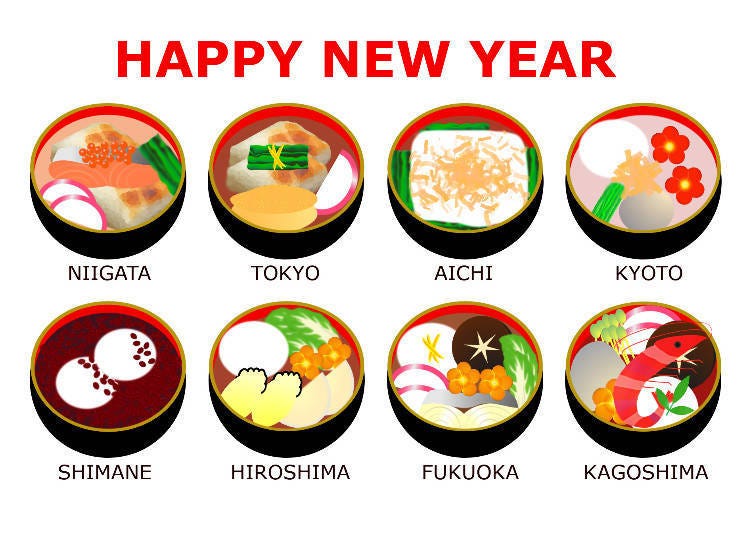
There are generally two types of mochi: the square-shaped kaku-mochi, and the round-shaped maru-mochi. Which shape is most common varies by region, and differs between east and west Japan, with the boundary roughly around Sekigahara in Gifu Prefecture.
Some border prefectures may eat both types of mochi, while the east generally leans toward kaku-mochi, and the west toward maru-mochi.
Ozoni is a type of mochi soup, with recipes that vary greatly by region and household. In many parts of eastern Japan, people add baked kaku-mochi to the soup, while Kansai families prefer boiled maru-mochi in miso soup.
In Chushikoku and Kyushu, the preference is for boiled maru-mochi, and in the San'in Region, boiled maru-mochi added to red bean soup. Because the recipes are so different, which ozoni one enjoyed growing up is a common topic amongst Japanese people when talking about their family roots.
Common Mochi Dishes
In addition to ozoni and its wide variety of recipes, there are many standard mochi dishes, as well.
・Isobe Mochi (磯辺餅)
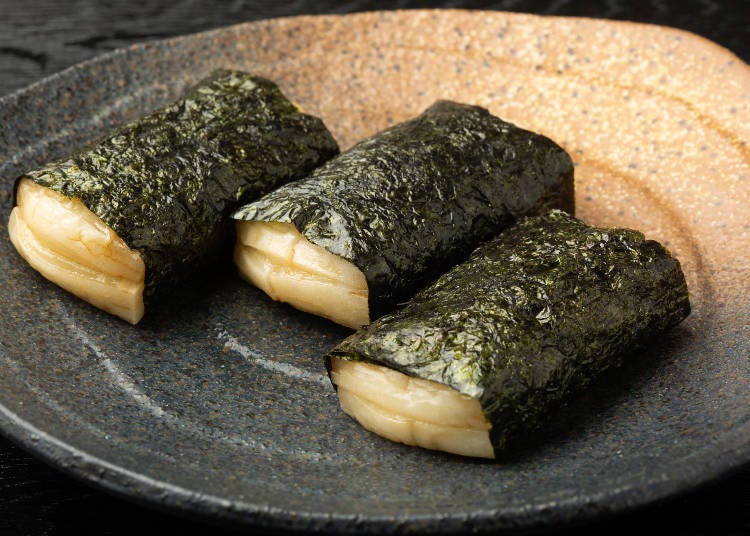
This is dish of grilled mochi flavored with soy sauce and wrapped in seaweed. Some people add sugar to the soy sauce for a sweet and sour kick.
・Kinako Mochi (きな粉餅)

This is made by mixing mochi with a powder consisting of kinako and sugar in hot water.
・Karami Mochi (からみ餅)
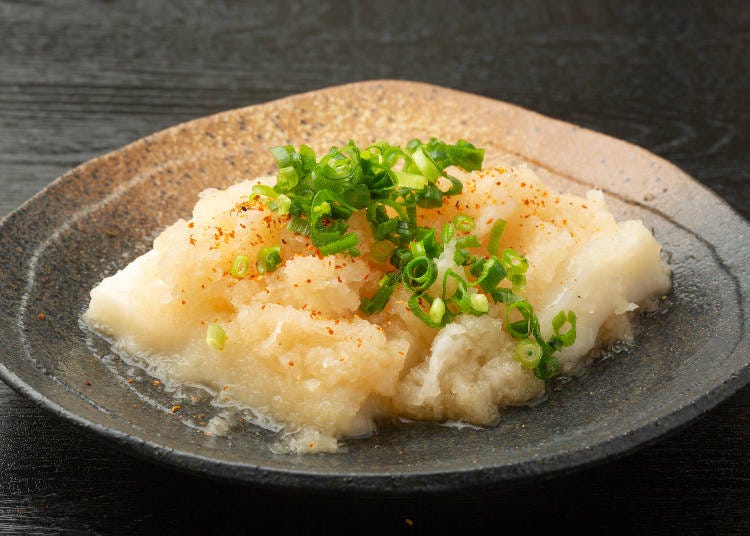
Mochi mixed with grated daikon and soy sauce. Some people add katsuobushi, seaweed, chili peppers, and green onions.
・Oshiruko (お汁粉)
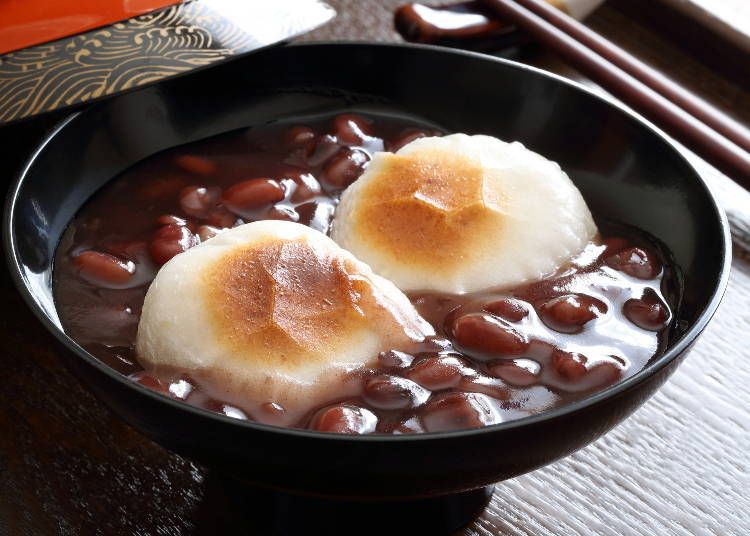
This is a dish of mochi, shiratama dumplings, and chestnuts boiled in a sweet, sugary azuki bean porridge.
Other Dishes Containing Mochi
Mochi, a favorite ingredient of many Japanese people, is also frequently incorporated into a variety of other dishes. New menu items featuring mochi appear nearly every day!
・Mochi Pizza (餅ピザ)

Thinly-sliced mochi cakes can also be used as an alternative to pizza dough. Add your favorite toppings to your mochi dough and heat in a frying pan or toaster. It's an original recipe can be easily replicated at home!
・Mentai Mochi Cheese Monja (明太もちチーズもんじゃ)
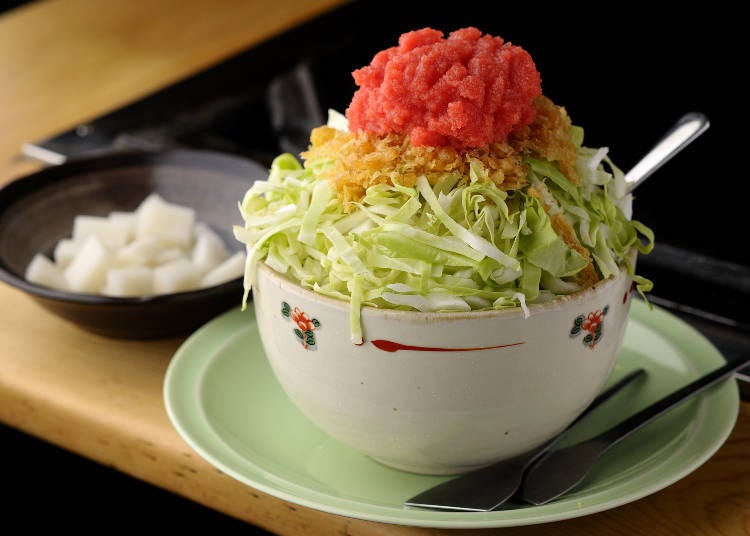
Monjayaki restaurants have added mochi dishes to their regular menu, alongside takoyaki and okonomiyaki. Mochi goes great together with mentaiko and cheese!
・Mochi Kinchaku (餅巾着)

This dish resembles a closed drawstring pouch made of fried tofu and filled with mochi. Mochi kinchaku are a staple ingredient for the Japanese dish, oden.
・Kakimochi (かき餅)
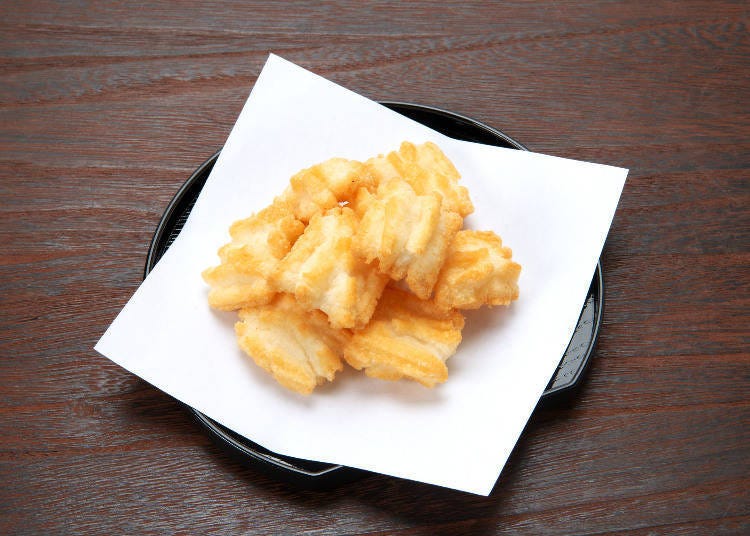
Kakimochi is made by mashing kagami mochi, or cutting mochi into small pieces and letting them dry. The crispy texture is perfect for a snack when fried in oil until golden brown.
And there we have everything you need to know about mochi. In Japan, mochi varies greatly in type and serving style by region and occasion. The ways you can enjoy mochi are endless. Why not try inventing your own original mochi dish?
References:
・Mochi - Encyclopedia Nipponica
・Expenditure on mochi/household survey (two or more people), ranking of cities with prefectural and ordinance-designated cities (*) by item (2018-2020) Average-Ministry of Internal Affairs and Communications Statistics Bureau
・Beware of mochi choking risk during New Year's Holiday – Consumer Affairs Agency
・Aff, Back number January 2020 Issue "Special Feature 2: Mochi" - Product of the Ministry of Agriculture, Forestry and Fisheries
Translated by: Krys Suzuki
Naho has been working as an editor and writer for over 17 years. After editing various materials such as manga, novels, and magazines, she became a freelancer. She is skilled in reporting and writing about food, sightseeing, and drama reviews while also providing web strategy consulting for food and beverage companies. As a result, she is always up-to-date on new products and trends in Japanese cuisine and conveys them in an understandable manner to people of all ages and nationalities through LIVE JAPAN.
- Category
*Prices and options mentioned are subject to change.
*Unless stated otherwise, all prices include tax.
Popular Tours & Activitiess
Recommended places for you
-

How to Get Don Quijote's Exclusive 2025-2026 Winter Gift (+Tax-Free Savings)
-

This Winter, Godzilla Takes Over Haneda Airport
by: Guest Contributor
-
Ad

Discover the "Miraculous Forest" in the Heart of Tokyo: The Institute for Nature Study (9 Minutes from JR Meguro Station)
-

Jujutsu Kaisen Takes Over JR East With a Wrapped Shinkansen This Winter
by: Guest Contributor
-

Strawberries, Style, and Tokyo’s Coolest Neighborhood: Winter Afternoon Tea in Kichijoji
by: Guest Contributor
-
Ad

(Opening in Jan 2026) 'THE SUMO LIVE RESTAURANT HIRAKUZA GINZA TOKYO!' 5 Exciting Ways to Experience the World of Sumo!
-

This Hidden Spot Has Held the Secret to Making Kyoto Tofu Taste Good For Over 300 Years
-

Yakiimo: Instead of Ice Cream Trucks Japan Has... Roasted Sweet Potato Trucks?
by: Korey Keen
-

[MOVIE] Experience the Tokyo Dessert Heaven with Grilled Sweet Dumplings and Water Cake at Mikan Club!
by: Devan Jean
-

Dining in Kyoto: Best Restaurants for Kaiseki, Sushi, Cafes & More
-

Where to Stay in Noboribetsu Onen: 6 Ryokan Hotels in Hokkaido's Spa Wonderland
by: Masakazu Yoshida
-

Hearty Japanese Katsudon Recipe: Crispy Pork Cutlet with Soft & Scrumptious Egg
- #best sushi japan
- #what to do in odaiba
- #what to bring to japan
- #new years in tokyo
- #best ramen japan
- #what to buy in ameyoko
- #japanese nail trends
- #things to do japan
- #onsen tattoo friendly tokyo
- #daiso
- #best coffee japan
- #best japanese soft drinks
- #best yakiniku japan
- #japanese fashion culture
- #japanese convenience store snacks














